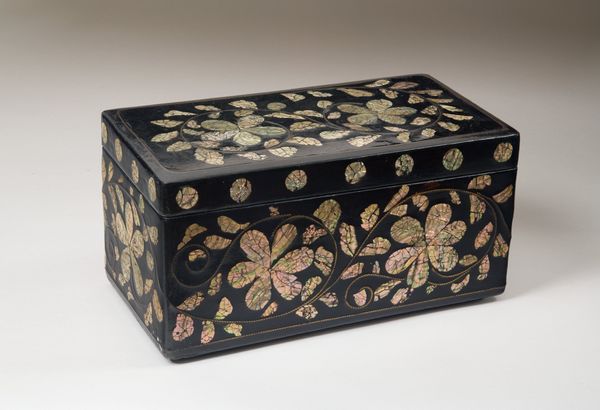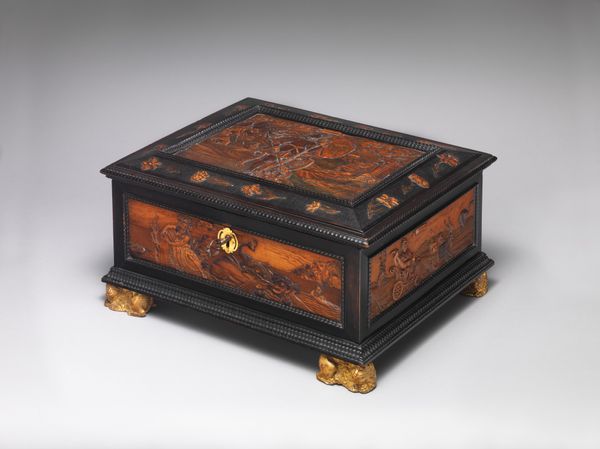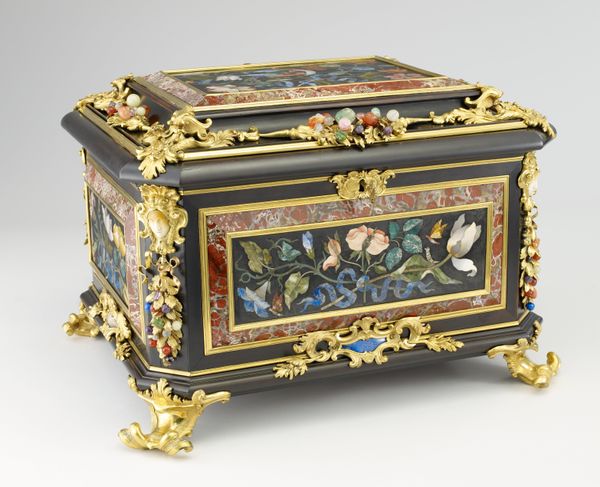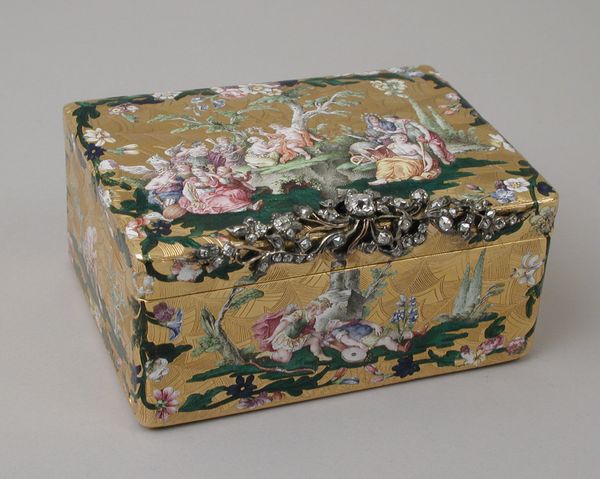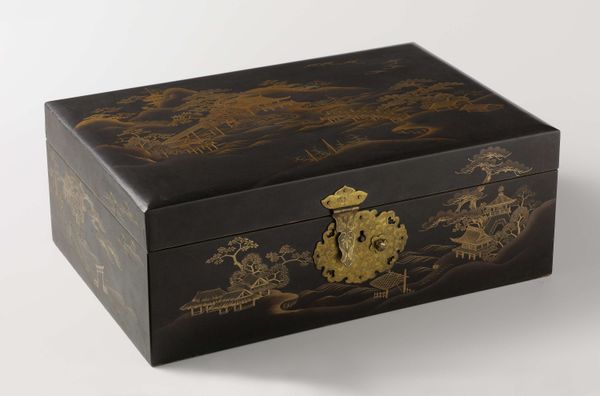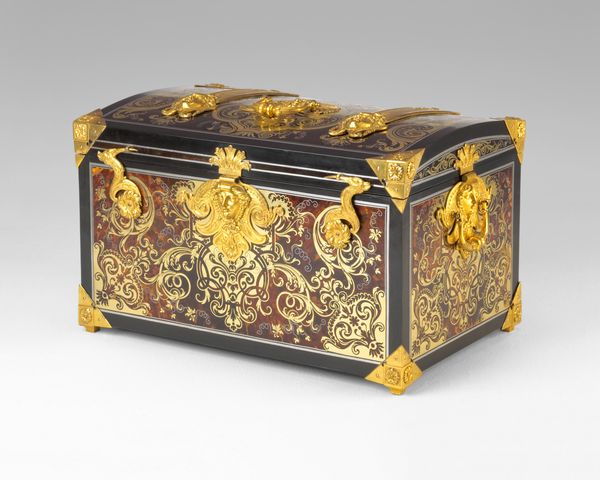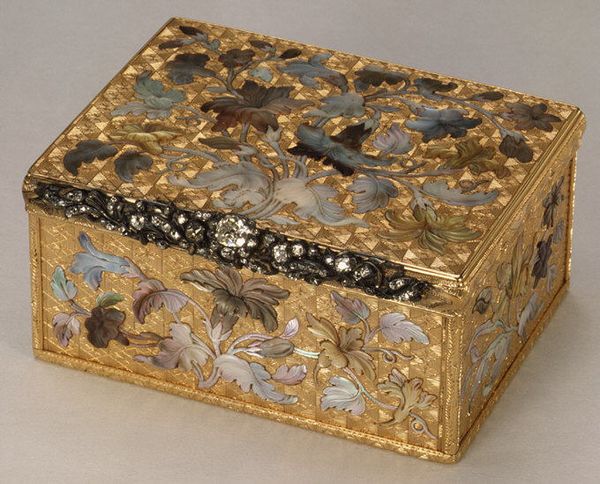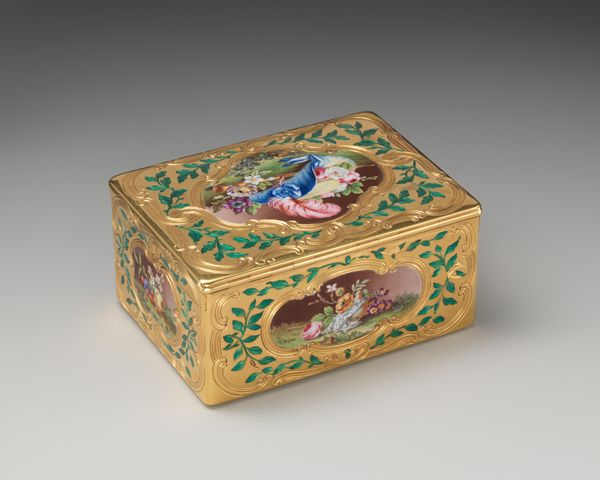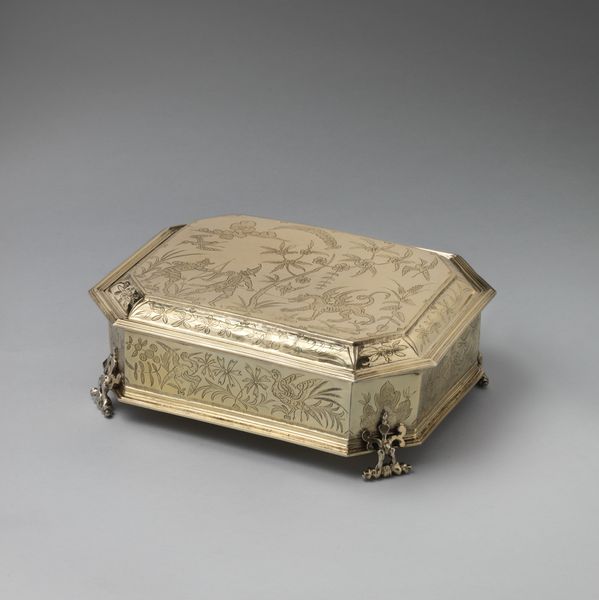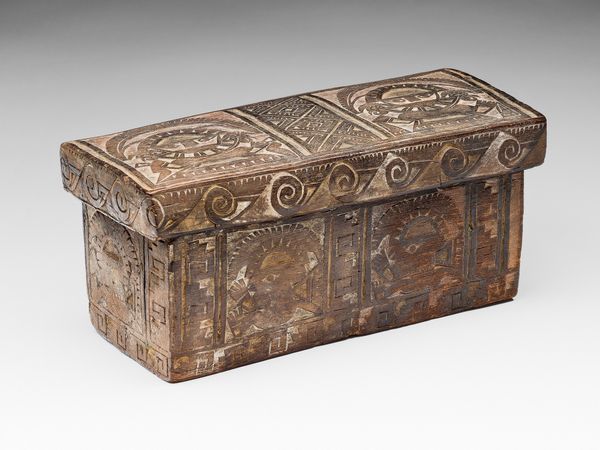
ceramic
#
portrait
#
ceramic
#
stoneware
#
ceramic
#
decorative-art
Dimensions: height 12.6 cm, width 7.3 cm, depth 1.2 cm
Copyright: Rijks Museum: Open Domain
Editor: Here we have an intriguing ceramic piece from between 1820 and 1840, titled "Doosje Carel Rabenhaupt". I find the floral decorations surrounding the portrait on top particularly interesting. What stands out to you most in this artwork? Curator: The arrangement of decorative elements offers a point of departure. The portrait itself, enclosed within an oval, asserts a centralized structure. Consider, too, the way the floral patterns articulate the perimeter, thus framing the central motif and creating a distinct visual boundary. The composition, with its stark contrast between the portrait and the dark background, uses that dichotomy to direct our gaze. Editor: It’s interesting how the contrast enhances the portrait, yet it's all within this small, functional object. Does the object itself play a role? Curator: Indeed. The rectangular form provides a geometric foundation upon which the decoration is built. Notice how the hard edges of the box juxtapose with the organic forms of the floral decorations, generating visual tension. Furthermore, the hinges themselves represent a physical disruption of this form. This interruption serves to remind us of the box's inherent function. What conclusions can we draw from these observed visual attributes? Editor: That the object’s purpose doesn’t negate artistic composition; that its beauty lies in carefully contrasting these angular and floral patterns to create a balance. Thank you! Curator: A fascinating observation. Such considerations allow for the construction of meaning rooted solely in form.
Comments
No comments
Be the first to comment and join the conversation on the ultimate creative platform.

